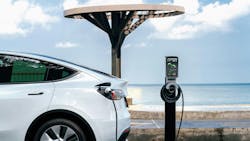GaN Spearheads Battery-Charging Revolution (Download)
Charging systems for electric vehicles (EVs) and hybrid-electric vehicles (HEVs) are, of course, crucial for powering batteries and ultimately having them operate efficiently. They can be divided into two main categories: off-board charging systems and on-board charging systems.
Types of batteries that can’t be charged:
Non-rechargeable batteries, also known as primary cells, are designed to be used once and then discarded:
- Classic-style lead-acid batteries can power an electric motor, scooter, or bicycle, etc.
- Alkaline batteries (Kirkland has the AA and AAA versions)
- 9-V Duracell batteries
- C batteries
- Lithium batteries aren’t rechargeable (primary cell) and use metallic lithium in the electrodes
